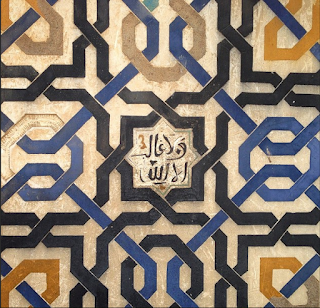
My travel program, GlobalEd, organizes a few weekend trips for its students - the first one I attended was to Granada, a town in Andalusia about 2 hours away from Sevilla (where I have been living.) Granada is known as the city of the Catholic Monarchs of Spain because it is the burial sight of King Ferdinand and Queen Isabella who are famous for uniting the kingdom of Spain with their marriage but also infamous for their religious zealousness and the Spanish Inquisition.
Day 1
Our amazing tour guide, Alejandro, took us to see the tomb of Ferdinand and Isabella inside the Royal Chapel of Granada. The tomb was carved by an Italian sculptor, as they were typically known to have the best work at the time. However, another tomb next to this one was carved by a Spaniard who had studied alongside Michelangelo so (as pointed out by our guide) it actually turned out to be the one of higher quality. We next saw the Granada Cathedral which is Renaissance style (very different from the Gothic style in Sevilla.) The altar piece, however, is Baroque, with dark golds contrasting the light whites/grays of the otherwise Renaissance space.
 |
| Cathedral of Granada (interior) |
 |
Day 2
We visited what has been claimed as one of the new wonders of the world: the Catholic monarchs' palace, “La Alhambra.” It is MASSIVE, complete with gardens and a separate vacation house all tucked away on top of one of the hills surrounding the city. The main parts of the palace were created by the moors during their control of the city, so Arabic inscriptions can be seen along almost every wall. It was surprising to see that even in the rooms where it is known Ferdinand and Isabella would pray, there were inscriptions on the walls claiming Muhammad as the one true prophet. I find it amazing that they had enough respect for the original culture to leave everything as was - it’s absolutely beautiful.From the top of one of the palace towers, we could see the whole city, the cathedral, and also in the distance the Sierra Nevada mountain range - the tallest mountain range in continental Spain.
Later that day I tried middle eastern food for the first time (falafel and couscous get an A+) and went to an arab teahouse.
 |
| La Alhambra (the palace) |
 |
| inside La Alhmabra (the palace) |
We began the day with a tour of the Albaicín, a neighborhood in the hills from which you can see the palace. The deeper into the neighborhood you go, the more it is considered “gypsy territory” and it is possible to find informal flamenco shows. We walked around looking at many of the small churches, and one mosque. We also stopped at a nunnery in which the nuns are not allowed to leave. They bake pastries and breads for the public and we bought some magdalenas from them (sweet muffins) which were extremely good.
One thing I noticed in Granada is that there are images of pomegranates everywhere because of the meaning of the city's name! On the manhole covers in the street, on pillars lining the sidewalks, hidden in keystones above doorways, they're EVERYWHERE.
 |
| view of El Albaicín (neighborhood) from La Alhambra (the palace) |
 |
| El Albaicín (neighborhood) |

No comments:
Post a Comment